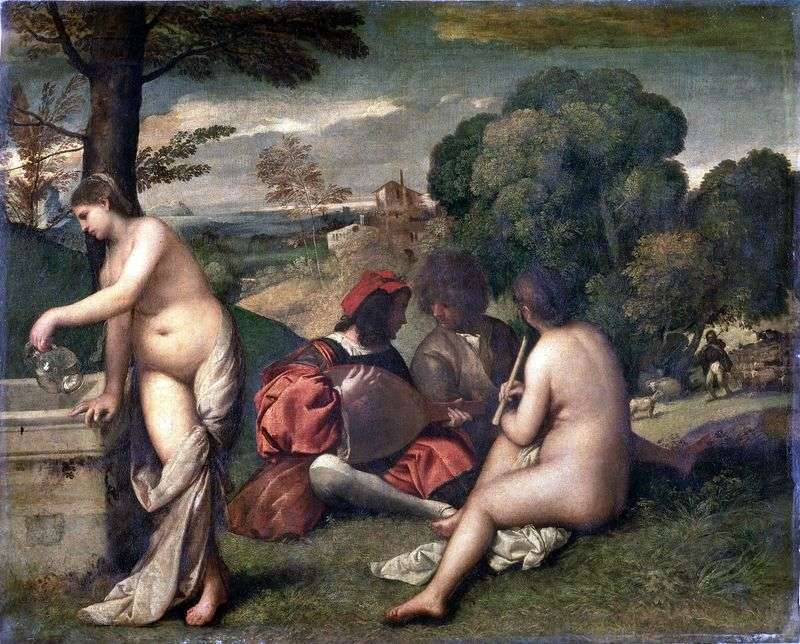
This work is one of the mysteries of European painting: despite its indisputable quality and epochal importance, opinions differ regarding its creator and the theme itself. It is an outstanding masterpiece of the Venetian Renaissance, a summit of Giorgione’s creative career, so much so that according to some it may have been completed, or at least finished by Titian, and not by Giorgione.
Painting was interpreted as an allegory of Nature, similar to Storm Giorgione, who was undoubtedly painted by him; it was even considered as the first example of a modern shepherd’s genre. His message should be more complicated than that. It is likely that the owner consciously combined several themes in this painting, and the decoding of the characters required a degree of erudition even during its creation. During the eighteenth century, painting was known by the simple name “Pastorali” and only later was the given the name “Fcte champktr” or “Rural concert” due to its festive mood.
Modern research indicated that the composition is in fact an allegory of poetry. Female figures in the foreground are probably muse of poetry, their nakedness is shown by their divine being. The pouring water of a constant number from a glass jar represents a superior tragic poetry, while the goddess holding a flute is a muse of less prestigious comedy or pastoral poetry. A well-dressed young man who plays the lute is a poet of high lyricism, while with his head uncovered is a common lyric poet.
The painter based this differentiation on the product of “Poetica” by Aristotle. Landscape is characterized by duality. Between the graceful, thin trees to the left, we see the villa, while on the right, in a lush grove, we see that the shepherd is playing on the bagpipes. Yet the effect is fully integrated. The very presence of beautiful, mature muses provides inspiration; the harmony of landscape and numbers, colors and forms announces a close relationship between man and nature, poetry and music.
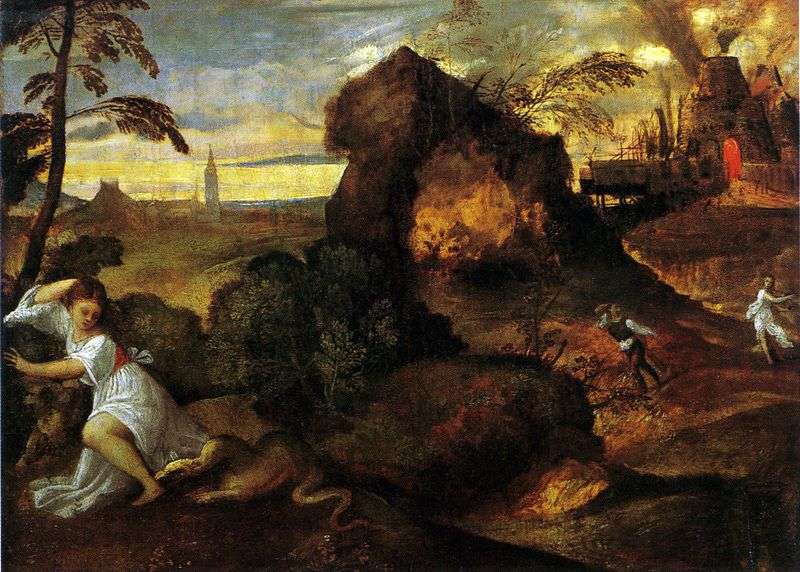 Death of Eurydice. D by Titian Vecellio
Death of Eurydice. D by Titian Vecellio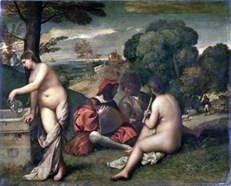 Concert country – Titian Vecellio
Concert country – Titian Vecellio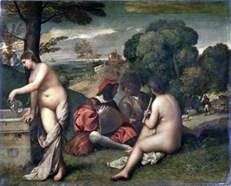 Concierto Rural – Titian Vecellio
Concierto Rural – Titian Vecellio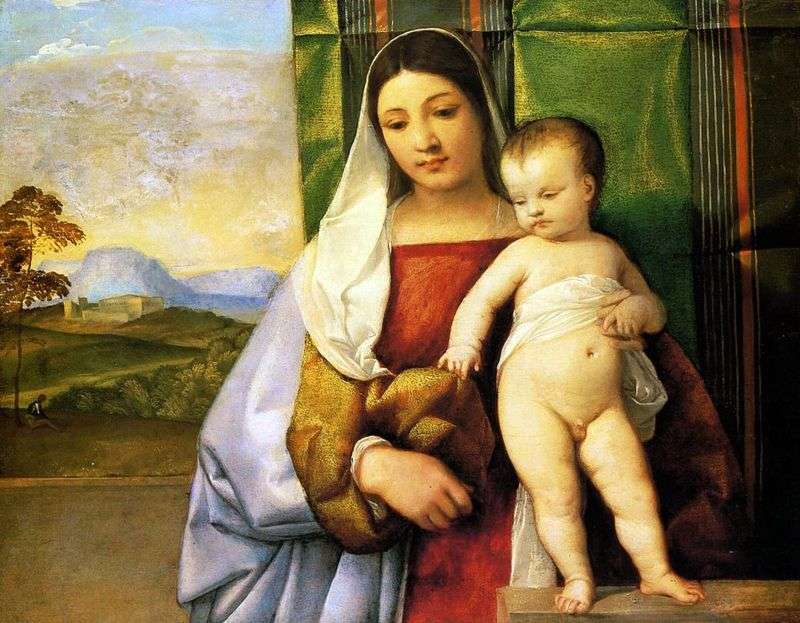 Gypsy Madonna by Titian Vecellio
Gypsy Madonna by Titian Vecellio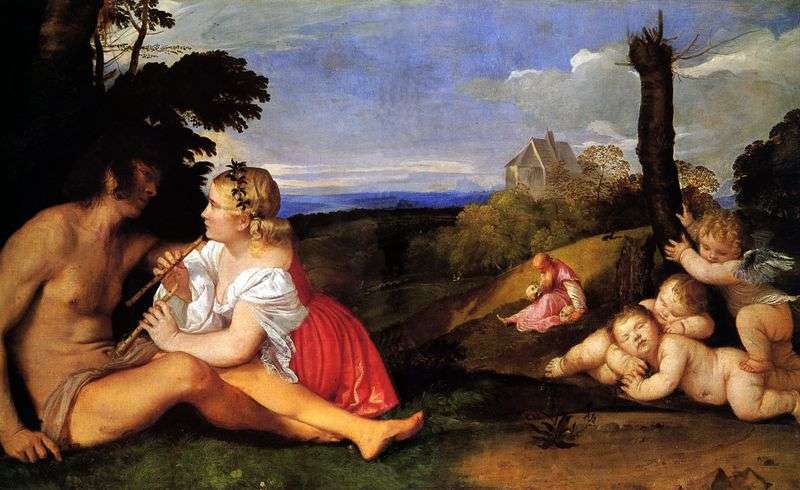 Three human age (Allegory of three ages) by Titian Vecellio
Three human age (Allegory of three ages) by Titian Vecellio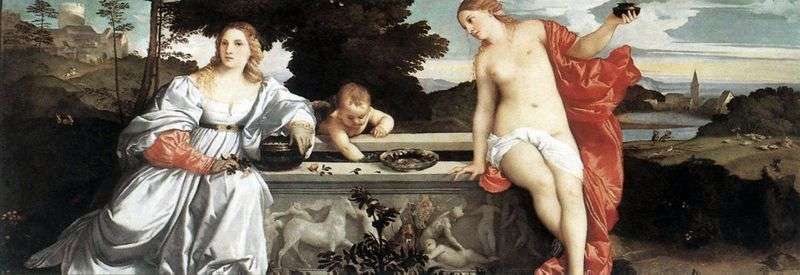 Love of the earth and heaven by Titian Vecellio
Love of the earth and heaven by Titian Vecellio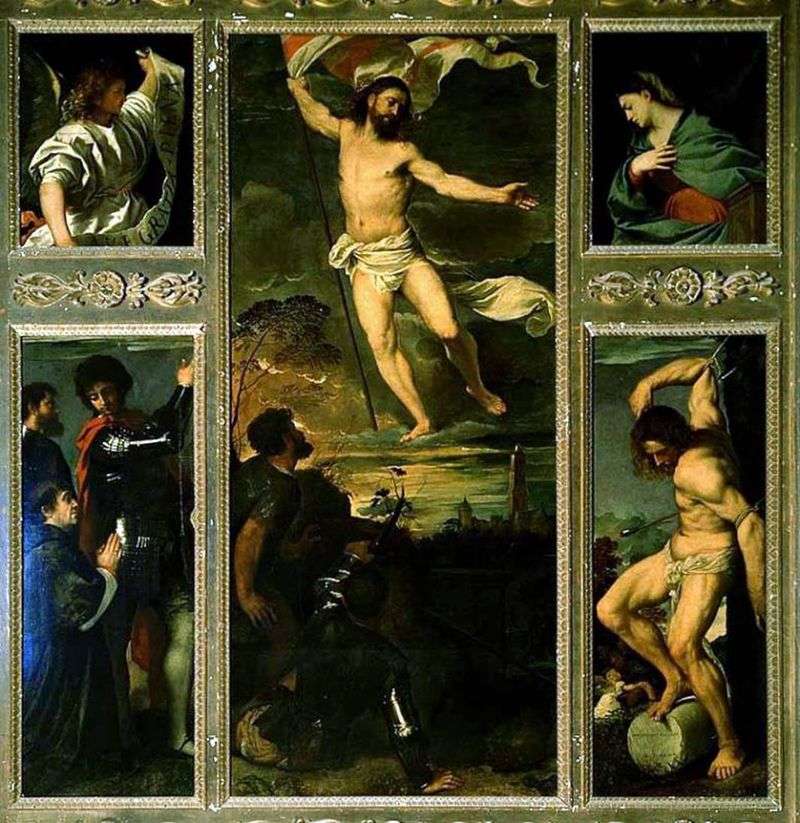 Polyptych Resurrection by Titian Vecellio
Polyptych Resurrection by Titian Vecellio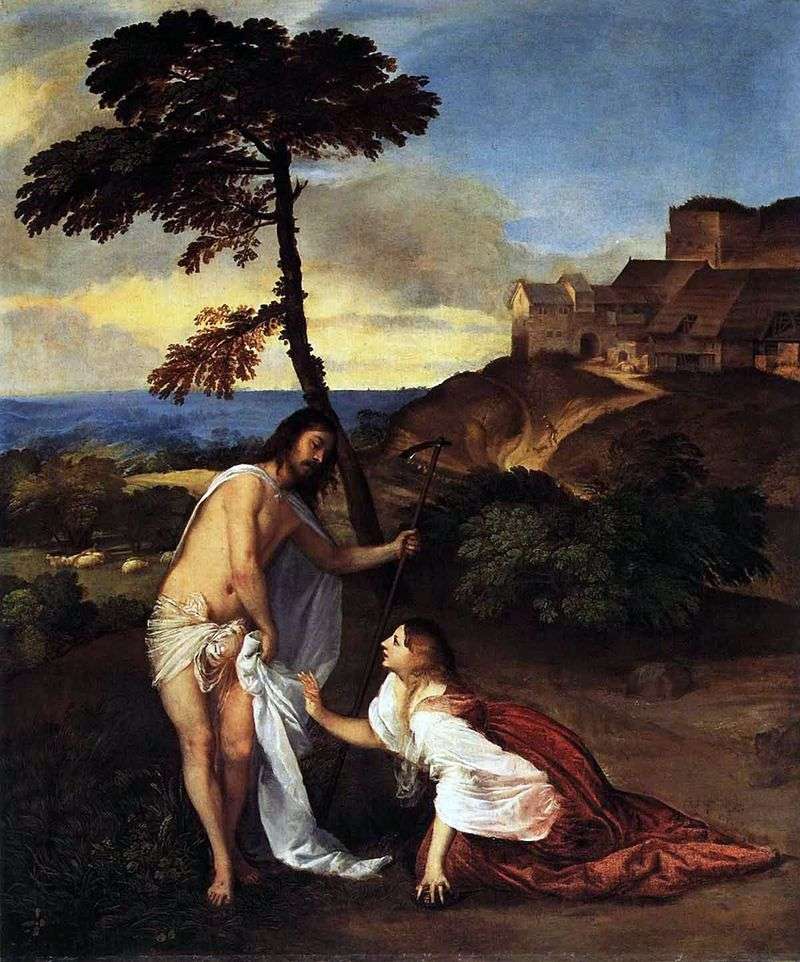 The Appearance of Christ to Mary Magdalene (Do not Touch Me) by Titian Vecellio
The Appearance of Christ to Mary Magdalene (Do not Touch Me) by Titian Vecellio